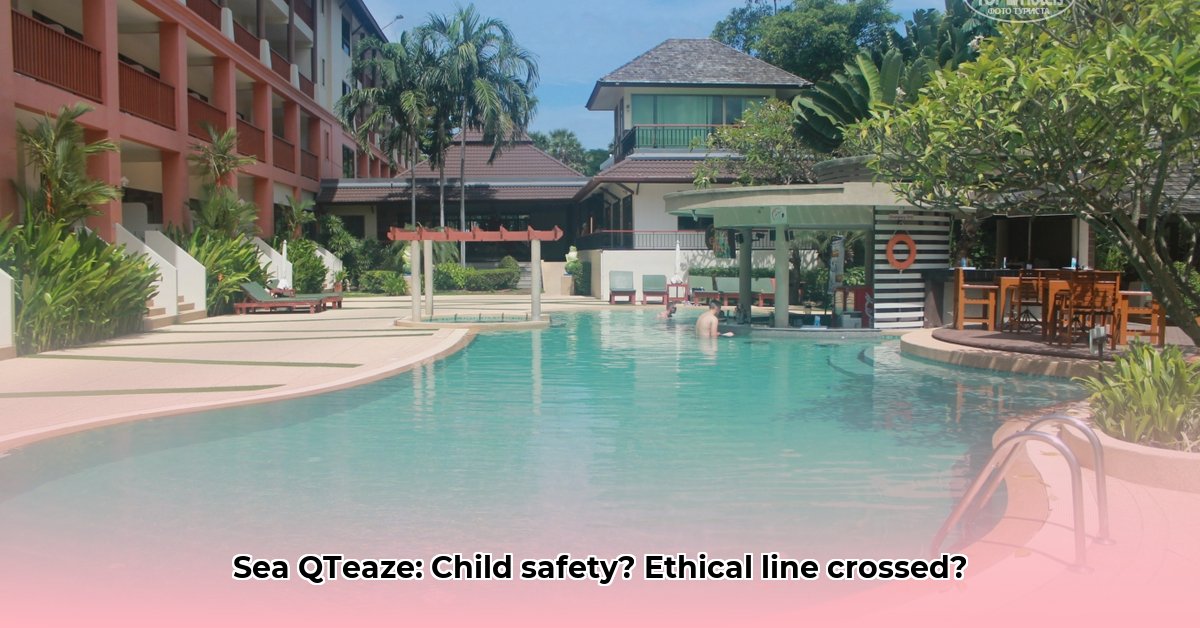
Understanding Online Child Exploitation
Protecting children online is a paramount concern. The term "sea qteaze," while inappropriate for direct discussion due to its association with illegal and harmful content, highlights the hidden dangers of online child sexual abuse material (CSAM). This material is illegal, deeply harmful, and requires vigilant efforts from individuals, organizations, and technology companies to combat. The anonymity of the internet exacerbates the problem, making it crucial to understand the risks and appropriate responses. What preventative measures can be taken to mitigate the risks?
The Devastating Impact of CSAM
CSAM is a serious crime with far-reaching consequences. Children depicted in this material suffer severe and long-lasting psychological trauma. For those who view such content, repeated exposure can normalize abuse and lead to harmful behaviors. The scale of the problem underscores the need for a multi-faceted approach to prevention and intervention. How can we effectively combat the creation and distribution of CSAM?
Recognizing the Warning Signs
Identifying potential situations where CSAM might be involved is challenging. It is often concealed through coded language or indirect references. However, several red flags can indicate potential issues. These include sudden personality changes in a child, unusual online interactions, secretive internet behavior, or reluctance to discuss online activities. Increased anxiety surrounding devices or withdrawal from usual activities also warrants attention. Trusting your intuition is vital—if something seems amiss, it likely requires further investigation. What are the most effective strategies for parents and educators to identify and address these red flags?
Protecting Children: A Multi-pronged Approach
Combating online child exploitation requires a collaborative effort involving parents, educators, technology companies, and law enforcement. A proactive and comprehensive strategy is essential to mitigate risks and create a safer online environment.
The Crucial Role of Parents and Educators
Open communication is paramount for parents and children. Age-appropriate conversations about online safety and responsible digital citizenship are crucial. Teaching children about privacy, the dangers of sharing personal information with strangers, and the importance of reporting suspicious activity are essential preventative steps. Regularly checking in with children about their online activities fosters trust and provides opportunities for early intervention. What methods can be used to foster open communication and build trust between parents and children about online interactions?
Leveraging Technology and Its Limitations
Parental control software can filter inappropriate content and monitor online activity. Regular software updates, age-appropriate devices, and family-friendly internet options all contribute to a safer digital space. However, technology isn't a panacea. No system is foolproof, and determined individuals can circumvent these controls. Therefore, fostering critical thinking skills in children and emphasizing open communication remain equally important. How can we strike a balance between utilizing technology for protection and teaching children the skills to navigate the digital world responsibly?
Reporting and Seeking Support
If you suspect online child exploitation, act immediately. Report it to the appropriate authorities and online platforms. Organizations dedicated to combating child abuse, such as the National Center for Missing and Exploited Children (NCMEC) 1, provide valuable resources and support for victims and concerned individuals. Remember, prompt reporting is crucial; delaying action can have severe consequences. What are the most effective channels for reporting suspected online child exploitation, and what support is available to victims and families?
Key Takeaways:
- Early identification is critical: Recognizing changes in behavior, secretive online activity, and suspicious interactions are essential.
- Proactive communication is key: Open conversations about online safety between parents and children are vital.
- Technology is a tool, not a solution: Parental controls should be used in conjunction with education and open communication.
- Immediate action saves lives: Report suspected online child exploitation immediately to the appropriate platforms and authorities.